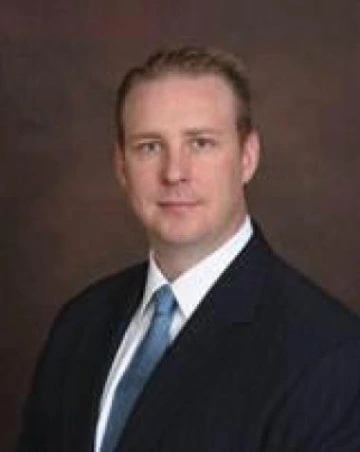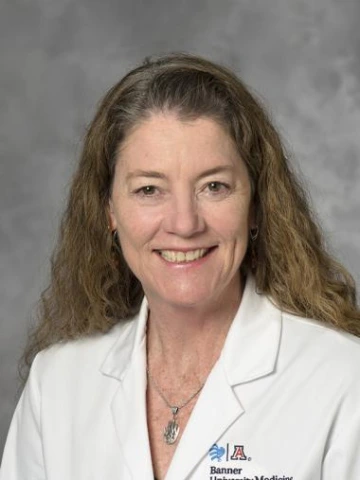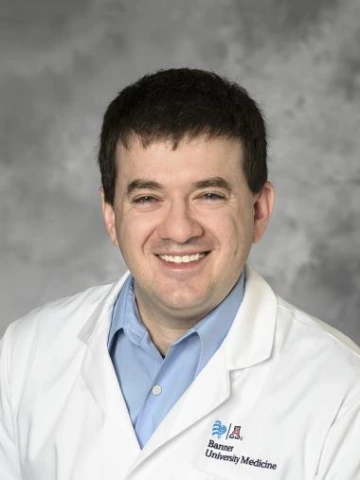New Safeguards and Procedures Allow Cancer Care, Research to Continue During COVID-19 Pandemic
UArizona Cancer Center, Banner – University Medicine continue state-of-the-art cancer care and cutting-edge clinical research during COVID-19 pandemic since ‘Cancer doesn’t sleep, so neither can we.’

When the COVID-19 pandemic began to spread closer to home, leaders at the University of Arizona Cancer Center and its clinical partner Banner – University Medicine had two critical questions to answer quickly.
First, what must be done to protect patients and staff from the spread of the novel coronavirus? Second, how can essential cancer care and research continue?

Julie Bauman Headshot
“Cancer doesn’t sleep, so neither can we,” said Julie E. Bauman, MD, UArizona Cancer Center deputy director, professor in the Department of Medicine at the UArizona College of Medicine – Tucson and chief of the Division of Hematology and Oncology at the college and Banner – University Medicine Tucson. “We've been working for nearly two months to create and maintain a ‘bubble’ around the cancer center so that world-class cancer care and research can continue. That is crucial because we don’t know how long this pandemic will last.”
“As COVID-19 emerged, Dr. Bauman took quick and decisive steps to protect health and safety so that we could provide continuous care to patients who need the kind of diagnostic and treatment capabilities that only can be provided by our National Cancer Institute-designated
comprehensive cancer center,” said Joann Sweasy, PhD, interim director of the UArizona Cancer Center.

Joann Sweasy, PhD
To safely continue essential cancer care, including cutting-edge clinical research, Dr. Bauman and her colleagues established new measures and protocols to create the “bubble” around the Cancer Center.
“The number one priority was to minimize COVID-19 in our center,” said Michael Frithsen, MBA, oncology services division administrator at Banner – University Medical Center Tucson. “That was the basis for everything that we've implemented to keep our patients and staff safe.”
Dr. Bauman agreed, “We know we can’t hold COVID-19 exposure to zero due to community spread, but we are doing everything in our power to be as close to zero as possible.”
Keeping COVID-19 out of the clinic begins with a comprehensive screening process for all persons prior to entering the building, including patients, staff and clinicians. Screening includes body temperature checks and a series of questions for symptoms or contacts associated with COVID-19 according to Sandra Kurtin, PhD, the COVID-19 onsite captain. An on-site, drive-through testing process was developed for patients failing the screening process that includes medical evaluation and testing for COVID-19. In addition, a process for triaging patients who require essential treatments and are under investigation for COVID-19 was developed using a limited-exposure process to protect patients, staff and clinicians.

Michael Frithsen, MBA
The next critical step was to ensure health-care providers remained healthy and had minimal exposure to COVID-
19. In response, Dr. Bauman recommended a rotating-staff model, comprised of two teams. The field-based “Team A” members would work for 14 days in the clinic and hospital – critical environments with risk of exposure that have to be protected. Meanwhile, the home-based “Team B” staff would self-quarantine for 14 days and conduct telemedicine services. The 14-day absence, which aligns with the U.S. Centers for Disease Control and Prevention quarantine and active-monitoring period for the virus, makes available a healthy and able reserve staff to take over clinical care.
“One of the major lessons learned early on from countries like Italy and cities like Seattle and New York is that it is imperative to protect workforce capacity across the service line,” Dr. Bauman said. “If providers start to become ill or must self-quarantine, we need to be ready with a reserve force that is unexposed.”

Sandra Kurtin, PhD
Another measure quickly implemented to maintain a safe clinical setting was to transition some patients to telemedicine rather than in-person visits. In fact, all visits that do not require physical presence in the building have moved to telemedicine. Two forms of telemedicine are common, including a traditional telephone call or a telehealth visit that can include a video component for face-to-face interaction through digital platforms.
“You may not be able to get a full physical examination, but we can check in on patients and develop plans for their care or treatment,” said Sandra Kurtin, PhD, director advanced practice and clinical integration at the Cancer Center. “We can discuss their symptoms, any concerns, laboratory results, and can walk them through a lot of the questions they would ask us if they were being seen in person. We also decide together when we need to see them in person in the clinic and make a follow-up appointment.”
One of the challenging changes for patients and staff has been the no-visitor policy designed to limit the number of people and reduce the potential for COVID-19 to spread within the clinic. However, processes have been devised to include caregivers by phone or video.
“Although we cannot allow visitors in most cases, we're making sure that we are inclusive of family members,” Frithsen said. “It is important to us and certainly the patients to have the ability to communicate and have virtual visitors, because these can be tough moments and conversations where support is needed. We want to provide that.”
Similar to clinical care, essential cancer research is ongoing with clinical trials continuing to accrue patients, especially those offering new treatments unavailable anywhere else in Arizona. Researchers also prioritized essential laboratory projects at the Cancer Center and implemented safeguards so that scientific discoveries to defeat cancer continue without interruption. This includes social distancing measures in laboratories and enabling researchers to work together on novel team science research projects through telephone and Zoom meetings.
According to Daniel Persky, MD, associate director, clinical investigations at the Cancer Center, clinical research staff is allied with the rotating staff model, working in three teams with two teams actively in the field and the third team unexposed at home, ready to rotate in.

Daniel Persky, MD
“Both our clinicians and our research staff had to buy into this,” Dr. Persky said. “All changes have been developed with input from staff, and we rely on continuous feedback from our staff about how things are working so we can modify them, if needed."
Throughout the implementation of the new policies and procedures, leadership at the Cancer Center and Banner – University Medicine were constantly evaluating and communicating with one another. Multiple meetings per day were scheduled to discuss provider capacity, supplies such as like personal protective equipment and swabs, and other essential needs to meet the demand of newly created protocols.
“There's been continuous conversation,” said Dr. Kurtin. “Everyone is trying to be transparent about what is happening, what we know, what we don't know and what we can't know. There was a lot that went into decision-making that was very methodical and thoughtfully done. And, I think we actually set a standard across Banner.”
“We were able to learn from other centers around the nation and the world to get processes in place before a surge in our community,” Dr. Bauman said. “The steps we took allowed us, the best we could, to get ahead of the curve while our community had a lower prevalence so we could continue providing state of art cancer care.”
The UArizona Health Sciences COVID-19 Resources webpage can be found here.
Banner – University Medicine and Banner Health’s COVID-19 patient resources are at this link.
For the latest on the University of Arizona response to the novel coronavirus, visit the university's COVID-19 webpage.
Media Contact:
Blair Willis
520-626-0331
About the University of Arizona Cancer Center
The University of Arizona Cancer Center is the only National Cancer Institute-designated Comprehensive Cancer Center with headquarters in Arizona. The UArizona Cancer Center is supported by NCI Cancer Center Support Grant No. CA023074. With its primary location at the University of Arizona in Tucson, the Cancer Center has more than a dozen research and education offices throughout the state, with more than 300 physicians and scientists working together to prevent and cure cancer. For more information: cancercenter.arizona.edu(Follow us: Facebook | Twitter | YouTube).
About the University of Arizona College of Medicine –Tucson
The University of Arizona College of Medicine – Tucson is shaping the future of medicine through state-of-the-art medical education programs, groundbreaking research and advancements in patient care in Arizona and beyond. Founded in 1967, the college boasts more than 50 years of innovation, ranking among the top medical schools in the nation for research and primary care. Through the university's partnership with Banner Health, one of the largest nonprofit health care systems in the country, the college is leading the way in academic medicine. For more information, visit medicine.arizona.edu (Follow us: Facebook | Twitter | Instagram | LinkedIn).
About the University of Arizona Health Sciences
The University of Arizona Health Sciences is the statewide leader in biomedical research and health professions training. The UArizona Health Sciences includes the Colleges of Medicine (Tucson and Phoenix), Nursing, Pharmacy, and the Mel and Enid Zuckerman College of Public Health, with main campus locations in Tucson and the growing Phoenix Biomedical Campus in downtown Phoenix. From these vantage points, the Health Sciences reaches across the state of Arizona and the greater Southwest to provide cutting-edge health education, research and community outreach services. A major economic engine, the Health Sciences employs nearly 5,000 people, has approximately 4,000 students and 900 faculty members, and garners $200 million in research grants and contracts annually. For more information: uahs.arizona.edu (Follow us: Facebook | Twitter | YouTube | LinkedIn | Instagram).
About Banner – University Medical Center Tucson and South
Banner – University Medical Center Tucson and Banner – University Medical Center South are part of Banner – University Medicine, a premier academic medical network. These institutions are academic medical centers for the University of Arizona College of Medicine – Tucson. Included on the two campuses are Diamond Children's Medical Center and many specialty clinics. The two academic medical centers are part of Arizona-based Banner Health, one of the largest nonprofit health care systems in the country. Banner Health is in six states: Arizona, California, Colorado, Nebraska, Nevada and Wyoming. For more information, visit BannerHealth.com/UniversityTucson or BannerHealth.com/UniversitySouth (Follow us on Facebook:@BannerUniversityMedicalCenterTucson or @BannerUniversityMedicalCenterSouth).



